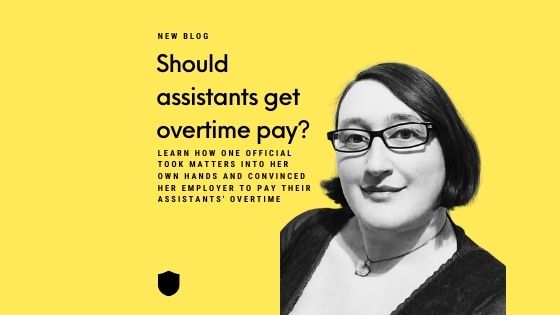Hey there, fellow administrative professionals! If you’re like me, you juggle a million things each day—from managing schedules and organizing files to keeping everything running smoothly. It’s easy to feel a bit overwhelmed when challenges pop up. But here’s a little secret: there is an app for that! Technology has become our best friend, and it’s more intuitive than ever, ready to help us tackle any challenge that comes our way.
The Magic of Technology at Your Fingertips
Every day, we encounter situations that require quick thinking and creative solutions. Whether you’re trying to organize a complex meeting or sort through a mountain of emails, instead of stressing out, why not explore the amazing digital resources available to you? Here’s why embracing technology can make your life a whole lot easier—and boost your value as an employee:
- User-Friendly Tools: So many software applications are designed with you in mind. You don’t need to be a tech genius to navigate them! Platforms like Microsoft 365 and Google Workspace are super intuitive, making it easy to find solutions quickly.
- Streamline Your Work: Automation is a game changer! With the right tools, you can set up automated tasks that save you time and reduce errors. For example, Microsoft Power Automate lets you create workflows that connect your apps. If you’re constantly copying data between Excel and other platforms, let’s find a way to automate that!
- Collaboration Made Simple: Working with your team has never been easier. Whether it’s using Google Docs for real-time editing or Microsoft Teams for instant chats, these tools help us collaborate seamlessly and make teamwork fun.
- A Wealth of Resources: The internet is full of helpful resources! From tutorials and webinars to forums where you can ask questions, there’s no shortage of information to help you level up your skills. Plus, many apps come with built-in support, so you can troubleshoot problems without breaking a sweat.
Why Embracing Technology Makes You More Valuable
Now, let’s talk about how embracing technology can elevate your career and make you a more valuable asset to your team:
- Increased Efficiency: By leveraging technology, you can streamline processes and complete tasks faster. This efficiency not only helps you stay on top of your workload but also impresses your supervisors and colleagues, showing them that you’re proactive and resourceful.
- Enhanced Skill Set: Staying up to date with the latest tools and technology means you’re constantly expanding your skill set. This not only boosts your confidence but also makes you more marketable within your organization. Employers value team members who are adaptable and eager to learn!
- Better Problem Solving: Embracing technology equips you with a variety of tools to tackle challenges creatively. When you can quickly find solutions and implement them, you become the go-to person in your office for tech-related issues, further establishing your value as a reliable team member.
- Improved Communication: Technology enhances communication and collaboration within teams. By mastering tools that facilitate smooth communication, you contribute to a more cohesive work environment, making you an indispensable part of your organization.
Cultivating a Tech-Friendly Mindset
Now, let’s talk about how to embrace this tech-savvy mindset. Here are some friendly tips to get you started:
- Think Like a Problem Solver: When you hit a bump in the road, ask yourself, “Is there an app for that?” Take a few minutes to explore potential solutions online. Whether you’re looking for a better way to manage your calendar or an app to help with project tracking, I promise the right tech is out there just waiting for you to discover it!
- Dive into Built-In Features: Before searching for new tools, take a look at what you already have. Microsoft 365 and Google Workspace are packed with features that can help you. For example, check out Microsoft To Do for tracking tasks or Google Keep for organizing notes and reminders. You might find everything you need is already at your fingertips!
- Learn and Grow: Investing time in learning how to use your tools can really pay off. Many platforms offer free or low-cost training resources to help you become more confident. Consider joining online workshops or webinars specifically for administrative professionals to get the latest tips and tricks.
- Connect with Fellow Assistants: Don’t underestimate the power of community! Networking with other administrative pros can open up new ideas and strategies. Share your experiences, ask for advice, and learn from each other to discover tools and methods that work for you.
Conclusion
Embracing technology isn’t just about making your job easier; it’s about empowering yourself to work smarter and enjoy your day even more! The next time you face a challenge, remember: there is an app for that! By developing a mindset of curiosity and exploring the intuitive tools at your disposal, you can boost your productivity, streamline your workflow, and truly shine in your role as an administrative professional.
Let’s embark on this exciting digital journey together, embracing technology as our trusted ally in the workplace! We’ve got this, and together, we’ll show the world just how valuable we can be!
Join our Tech Hacks
Ready to take your tech skills to the next level? Join us for our free Tech Hacks webinars designed specifically for assistants!
Don’t miss out on the opportunity to enhance your skills and become an even more valuable member of your team. Sign up today and let’s explore the world of technology together!









